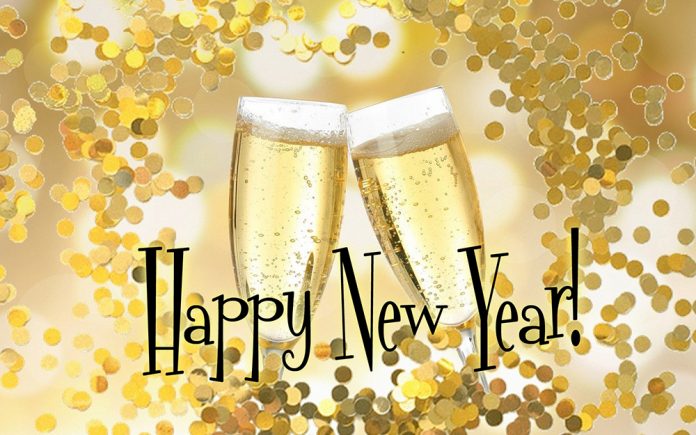
By Rick Riozza
Cheers to the old! Here’s to the new! We’ve been simply enjoying a sparkling time tasting through many a bubbly—Champagne, Crémant, Franciacorta, Sekt, Prosecco, Lambrusco, Brachetto, Vino Spumante, Cava, and our Domestic Sparkling wines from California and Oregon. Bubbles—always bubbles. If you had to pick one—you couldn’t! So we’ll pick out some:
First things first! When the Washington Nationals won the World Series over the Houston Astros, 4 games to 3, they celebrated by spraying their locker room with Champagne, right? Well, not exactly. There were a few bottles of Veuve Clicquot present, (and good news for aficionados), most of the “bubbly” that was shaken and sprayed was Budweiser! (By the way—I was a sad looser when the Dodgers dumped. In my callousness, I called on the heavens to see to it that neither home team would enjoy a win at home. And they didn’t!—I should’ve gone Vegas: a hundred dollar bet would have netted me thousands! I’m still consoling myself with chilled bubbly.)
So Champagne is still revered and rightly so. Most of us all love it; and we are impressed to no end when a guest or visitor brings over a bottle to toast and cheer. If the fates allow, and, we get to treat ourselves to a $100 Champagne, seek out the 2006 Henriot Millesime Brut. Maturing nicely, this wine is rich and stylish. It has developed a ripe yeast and toast character along with a beautiful patina of intense spice, and minerality along with great complexity. A great experience to drink now!
Even in France, Champagne isn’t the complete scene of bubbles. There’s Crémant: the name adopted by many French wine regions to describe wines made in the same way as Champagne—with the second fermentation in the bottle; but, elsewhere in France. And typically sell for anywhere between $15–35, half the price of most Champagne. In style, they are almost all brut/dry, made from varied grapes showing varied flavors. We always suggest looking to the Lucien Albrecht portfolio.
In the Loire, there’s an array of styles and names. Vouvray’s Chenin Blanc makes age-worthy sparkling wines matured in the limestone caves under the vineyards. Saumur uses blends of Chenin Blanc and Chardonnay for its more varied offerings. There’s also a Loire-wide appellation, Crémant de Loire which produces some of the best sparkling wines in the valley. For next year, ask your wine merchant to grab a bottle.
As we wrote in our summer columns, we stayed in Italy for a while and were treated to many vini spumanti. One particular stunning sparkler is the Ca’ del Bosco 2013 Vintage Collection Dosage Zéro Franciacorta ($75). Some call Franciacorta an “Italian Champagne” with guff from both France and Italy in doing so. No matter: this wine is all about precision, finesse and purity. It opens with enticing scents of white spring flower, crushed stone, lemon pastry and hazelnut. The aromas carry over to the chiseled palate together with creamy yellow apple, tangerine zest. Magnifico!
Another fun and fantastic “frizzante” that we forget about is Lambrusco. No—not the Riuniti stuff sold here, but, the “off–dry” real Italian deal Lambrusco. So “frizzante” is used to describe wines that are gently sparkling—lightly effervescent, while “spumante” is used for fully sparkling wines—with big strong bubbles, such as in Asti Spumante.
A Lambrusco from Modena, which is close to the city of Bologna—“the stomach of Italia”, is perfect for the territory of salumi and the cheeses that are produced around the fields. Like a Beaujolais, it goes great with charcuterie. Medici Ermite NV Metodo Ancestrale—Lambrusco di Modena ($27) When one forgets the American Riuniti, you are free to enjoy the real deal: Here there is wild berry, dried rose, violet and an unusual but intriguing whiff of garrigue lift out of the glass. On the savory side, find fizzy and vibrant acidity showing succulent red cherry, white peach, strawberry, lemon zest and bread dough. It’s fun and easy drinking but also loaded with personality.
Everyone knows the value of a Spanish Cava. For better or worse, the wine, made in the classic Champagne style, has thrived mostly because of its affordability. But a lot of the inexpensive stuff is just so-so. A real Cava treat would be the Augusti Torello Mata 2012 Gran Reserva Brut Nature ($35)
This Gran Reserva Cava is rich with mature aromas of brioche. There’s enough acidic freshness that is layered and complex, showing yeasty spiced apple flavors… A mild note of toast melds with a hint of butter and brioche on the lingering finish. Drink like a true Spaniard!—this is a winner.
The Joys of Sekts: Suave & Seductive
If it seems that quality sparkling wine from Germany rarely makes it to the United States, it’s because they drink it all up! Sekt—often floral and fruity on the nose, is remarkably complex in its flavor profile, with bristling acidity and a delicate, dancing mouthfeel. It’s made from an array of grapes, such as Riesling, Pinot Blanc, or Pinot Noir, and offers a unique alternative to Champagne, at a much lower price.
Trader Joe’s sells a cheap version for a quick sparkler quaff—it’s a light fair sampler—beats a punch to the nose. If one has the time and the funds look for the Von Buhl 2015 Riesling Brut Sekt ($45). It shows a delicate biscuit and brioche accent with concentrated yellow apple and pear. Made in the traditional method, the bubbles are fine and persistent, filling the mouth with a rich but yielding mousse. Racy lime and lemon acidity guides a piercing finish, which is exceptionally long, with a lingering silken honeyed cling. Does that sound dazzling? It is—it’s simply bubblicious! Cheers to the New Year!










































